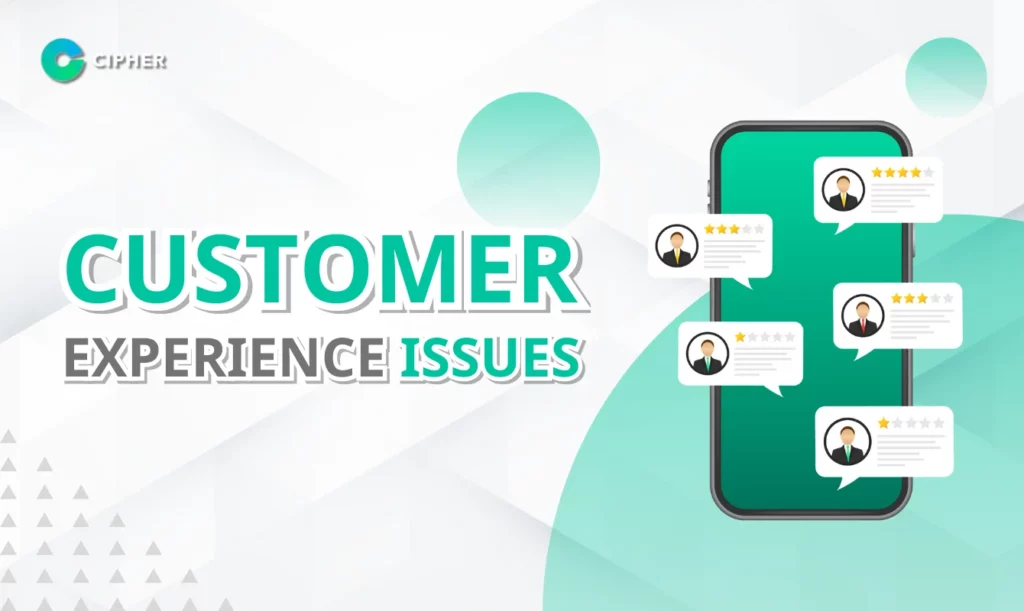Table of Contents
Have you ever wondered why some customers disappear despite your products remaining as good as ever? The truth is, “Customer Experience” might be the blind spot businesses overlook, even though it’s the primary reason customers silently walk away. Most customers are ready to stop using your services immediately after encountering just a few Customer Experience issues or poor experiences.
At Cipher, we invite you to look deeper into your customer journey to understand how small, neglected feelings can translate to massive sales losses. This article will open new perspectives about Customer Experience, along with actionable CX development approaches, Social Media Marketing services, and tailored solutions designed specifically for your business.
What is Customer Experience?

Customer Experience refers to customers’ feelings and perceptions of your brand across all touchpoints, from pre-purchase through usage to post-service interactions. Experience encompasses every dimension of interaction with your brand, directly affecting repeat purchase decisions and customer loyalty.
The Difference Between Customer Experience (CX) and Customer Service
Customer Experience Issues That Drive Customers Away
1. Not Understanding Customer Needs
2. Unsmooth Touchpoints
What elements make up Customer Experience regarding touchpoints? When contact points between customers and brands aren’t smooth, they become Customer Experience issues that negatively impact business, such as:
- Slow-loading websites: Difficult-to-use websites cause most customers to leave if loading takes longer than 3 seconds, immediately resulting in lost sales opportunities
- Limited contact channels: In an era where customers demand convenience, having insufficient contact options deteriorates the Customer Experience
- Complicated purchase processes: Complex ordering or payment procedures make customers change their minds instantly
- No post-sale follow-up: Failing to track satisfaction after purchase misses opportunities to address Customer Experience issues early
3. Inconsistent Communication
4. Ineffective Customer Support
Another common Customer Experience issue is inefficient customer support, resulting in customer dissatisfaction and discouraging repeat purchases:
- Slow or no response: Most customers expect immediate answers when they have questions or problems. Waiting too long creates negative feelings toward the brand
- Not listening to feedback: Customer Feedback indicates what needs improvement, but many businesses overlook or don’t seriously implement it
- No efficient management system: Lacking systematic processes to handle and resolve complaints allows Customer Experience issues to grow uncontrollably
What is Customer Experience Management?
Examples of Good and Bad Customer Experience
Understanding successful and failed Customer Experience examples helps businesses learn and develop. CX is what creates differentiation in highly competitive markets. Let’s look at examples to learn from:
Examples of CX That Drive Sales
What aspects of Customer Experience create sustainable sales? We can see from successful brands like:
- Apple: Creates a unique Customer Experience from product design and store layout to specialized staff, making customers feel special in every interaction
- Zappos: Emphasizes Customer Experience with policies like free shipping and returns within 365 days, plus customer service that exceeds expectations, building long-term loyalty
Creating outstanding Customer Experience requires knowing customers deeply, delivering beyond expectations, and maintaining an efficient feedback loop for continuous development.
Examples of CX That Lose Customers
Customer Experience issues severely impact businesses, as seen in United Airlines’ major crisis when video footage of a passenger being dragged off a plane spread across social media. This event not only caused stock drops and massive revenue losses but also destroyed long-term customer confidence.
Another example is a major department store that lost over 30% of customers in just one year due to Customer Experience issues stemming from online system changes made without considering users. Complex websites, difficult product searches, and complicated payment processes drove customers to competitors offering better Customer Experience.
How to Address Customer Experience Issues Effectively

Start by Listening to Customers
Addressing Customer Experience issues must begin with seriously listening to customers. Customer Feedback is the most valuable resource for developing CX, which should evolve from customers’ perspectives, not just business viewpoints.
Businesses should create diverse feedback channels, including surveys, customer interviews, online behavior tracking, and social media message analysis to comprehensively understand Customer Experience issues. Importantly, this data must be analyzed and implemented in tangible improvements.
Redesign the Customer Journey
Fixing Customer Experience issues requires looking at the entire Customer Journey. Customer Experience is the path customers travel with your brand, from awareness and purchase decisions through usage to referrals.
Businesses should analyze and design Customer Journey Maps to identify all touchpoints, especially customer pain points, then improve each to make the Customer Experience smooth and coherent. This approach addresses Customer Experience issues precisely and efficiently.
Elevate Customer Experience Marketing
Customer Experience Marketing focuses on creating impressive experiences at every touchpoint to increase long-term satisfaction and loyalty. This method helps sustainably resolve Customer Experience issues.
Effective Customer Experience Marketing starts with deep customer understanding, using insights to create targeted content and communication, and implementing technologies to create experiences that exceed expectations, such as using AI to analyze customer behavior and present relevant offers.
Customer Experience Services from Team Cipher
Team Cipher specializes in solving Customer Experience issues and providing Social Media Management services. With over 10 years of experience developing Customer Experience Management for leading organizations, our services cover everything from analyzing what your customers truly need, designing appropriate Customer Journeys, to implementing efficient Customer Experience Management systems.
Our expert team is ready to analyze and improve your business’s Customer Experience, with modern tools for tracking and measuring, ensuring that every investment in CX development translates to valuable returns for your business.
How Our Digital Customer Experience Strategy Creates Results
At Cipher, we understand that creating Customer Experience excellence requires a comprehensive strategy. Our approach combines:
- In-depth customer research: We identify both explicit and implicit needs that drive satisfaction
- Touchpoint optimization: We analyze and enhance every interaction point to eliminate CX issues
- Technology integration: Our solutions leverage the latest tools to deliver engaging Customer Experience at scale
- Measurement frameworks: We implement systems to track Customer Experience success metrics tied to business outcomes
By focusing on these elements, we help businesses overcome common Customer Service challenges while building a foundation for sustainable growth. Our clients consistently report significant improvements in customer retention, satisfaction scores, and revenue growth after implementing our recommendations.
Conclusion
Customer Experience issues are the main reason businesses lose customers, but they simultaneously present opportunities for development and differentiation. Understanding that Customer Experience is a crucial factor in customers’ repeat purchase decisions helps businesses recognize its importance and invest seriously in development.
Whatever Customer Experience issues your business faces, solutions must begin with a deep understanding of customers. Contact Team Cipher today for consultation, Social Media Marketing services, and approaches to develop your business’s Customer Experience to stand out from competitors and sustainably maintain customer growth.
Frequently Asked Questions (FAQ) About Customer Experience
What are the main causes of Customer Experience issues that make businesses lose customers?
How does Customer Experience Management differ from Customer Service?
How can the success of Customer Experience improvements be measured?
Customer Experience improvement success can be measured by several indicators, including:
- Net Promoter Score (NPS) indicating willingness to recommend the brand
- Customer Satisfaction Score (CSAT) measuring overall satisfaction
- Customer Effort Score (CES) measuring ease of service use, repurchase rates, and customer retention
- Retention Rate, as well as qualitative data from Customer Feedback
Businesses focused on increasing Customer Experience quality should monitor these metrics regularly as part of their overall Customer Experience strategy.
Where should you start when developing Customer Experience?
Customer Experience development should begin with:
- Deeply understanding customers through collecting Customer Feedback and analyzing behavior
- Creating Customer Journey Maps to identify all touchpoints and discover pain points that need addressing
- Systematically improving problematic areas
- Measuring results and continuously improving





